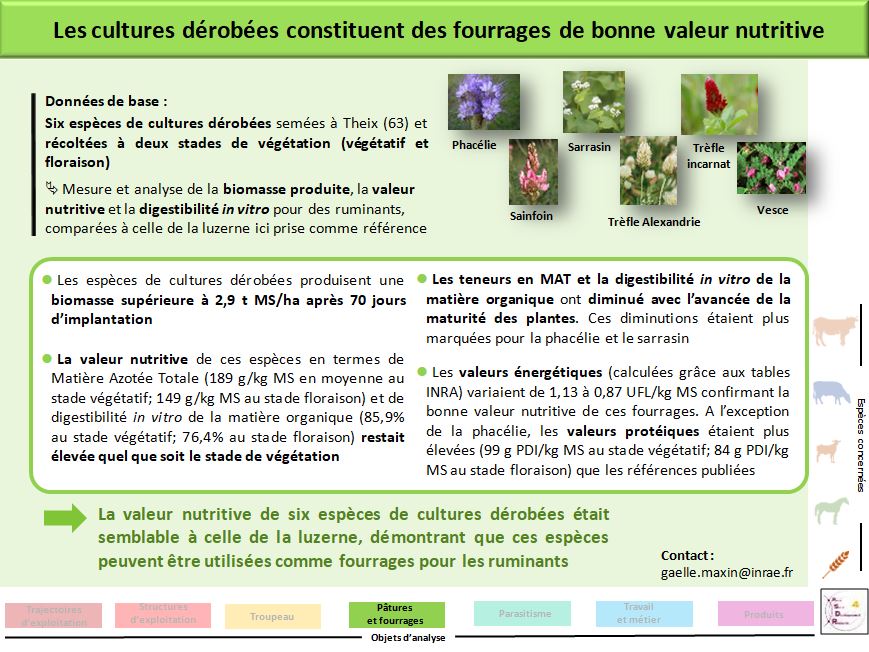new-DEAL
|
Article scientifique G. Maxin, B. Graulet, A. Le Morvan, et al. Cover crops as alternative forages for ruminants: nutritive characteristics, in vitro digestibility, methane and ammonia production Animal Production Science, 2020, 60(6), 823-832 Context: The use of cover crops provides agronomic and environmental benefits in crop–livestock systems. They can also constitute alternative forage resources for ruminants, particularly when climatic conditions limit grass supply. However, information on the nutritive value of these crops remains scarce. Aims: The objective of the present study was to assess the fresh forage potential of several plant species (sainfoin, buckwheat, phacelia, berseem clover, crimson clover and vetch) commonly used as cover crops and harvested at two phenological stages, namely, vegetative stage (VS) and flowering stage (FS). Methods: Chemical composition and fermentation parameters after in vitro ruminal incubation of the plant species were measured and compared with those of lucerne. Key results: Chemical composition and in vitro organic-matter digestibility varied both with species (P < 0.001) and stage (P < 0.001). Crude protein concentration (g/kg dry matter) varied at VS from 212 (sainfoin) to 151 (phacelia), and at FS from 187 (vetch) to 88 (phacelia). The in vitro organic-matter digestibility at VS varied from 0.91 (buckwheat) to 0.82 (lucerne), and at FS from 0.81 (vetch) to 0.74 (lucerne). Buckwheat and sainfoin had the greatest concentrations of condensed tannins and total phenolic compounds. The incubation of phacelia, sainfoin and buckwheat resulted in a lower production of volatile fatty acids than did incubation with the other plant species. Methane production was lower at both stages for phacelia (–26%), buckwheat (–12%), sainfoin (–14%) and berseem clover (–13%) than it was for lucerne. Ammonia production expressed as total N proportion was significantly lower for sainfoin and buckwheat than for the other plant species. The reductions in methane and ammonia appeared to be linked to certain phenolic compounds for buckwheat and to condensed tannins for sainfoin. Conclusions: The present study showed that these cover crop species hold nutritive characteristics as good as lucerne, indicating that they could be suitable for ruminant nutrition. Moreover, buckwheat and sainfoin have potential beneficial effects on methane and ammonia production. Implications: These results constitute a first step towards a recommendation to farmers to use cover crops as forage.Keywords: catch crops, phenolic compounds, tannins A consulter ici : https://www.publish.csiro.au/AN/AN19091  |